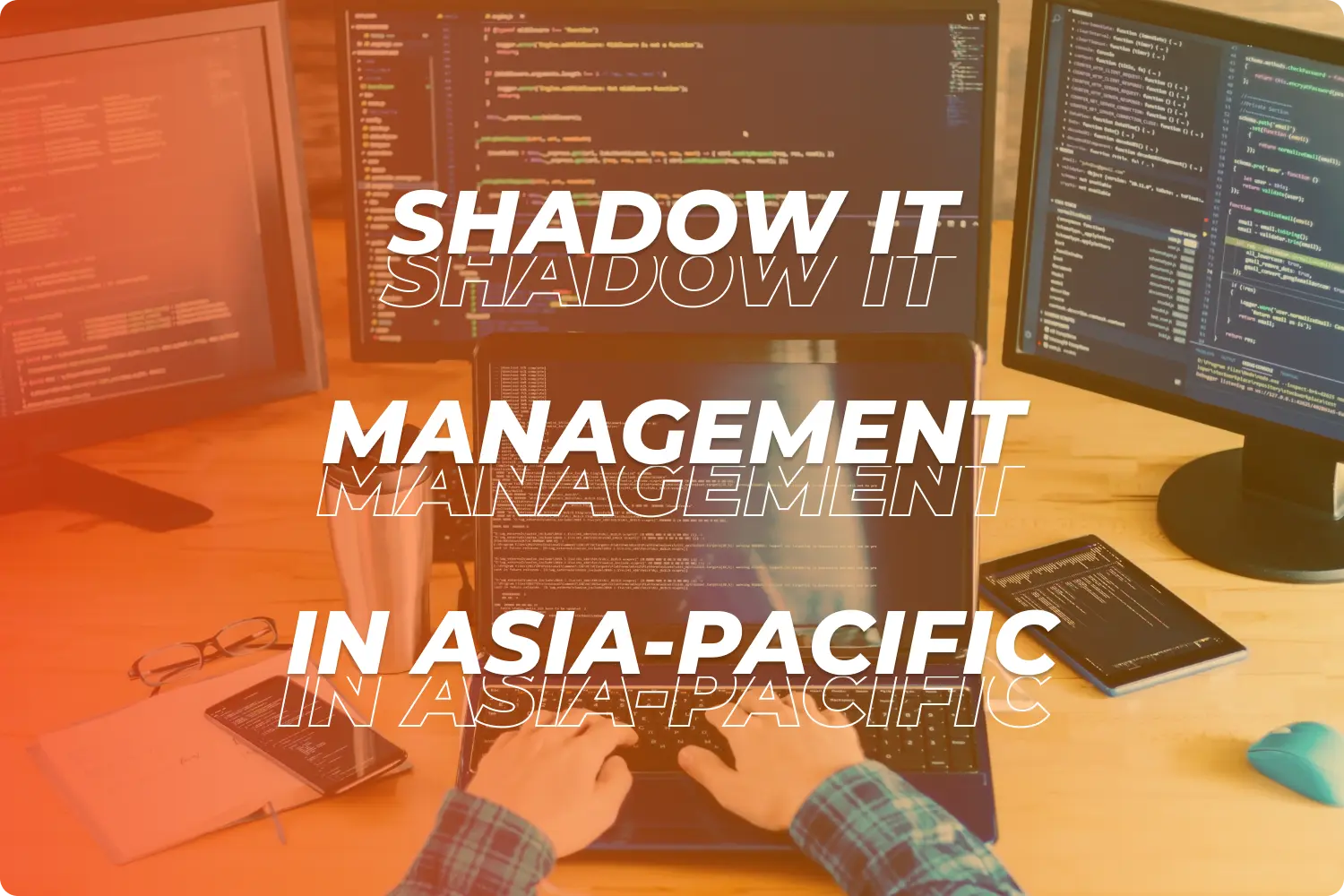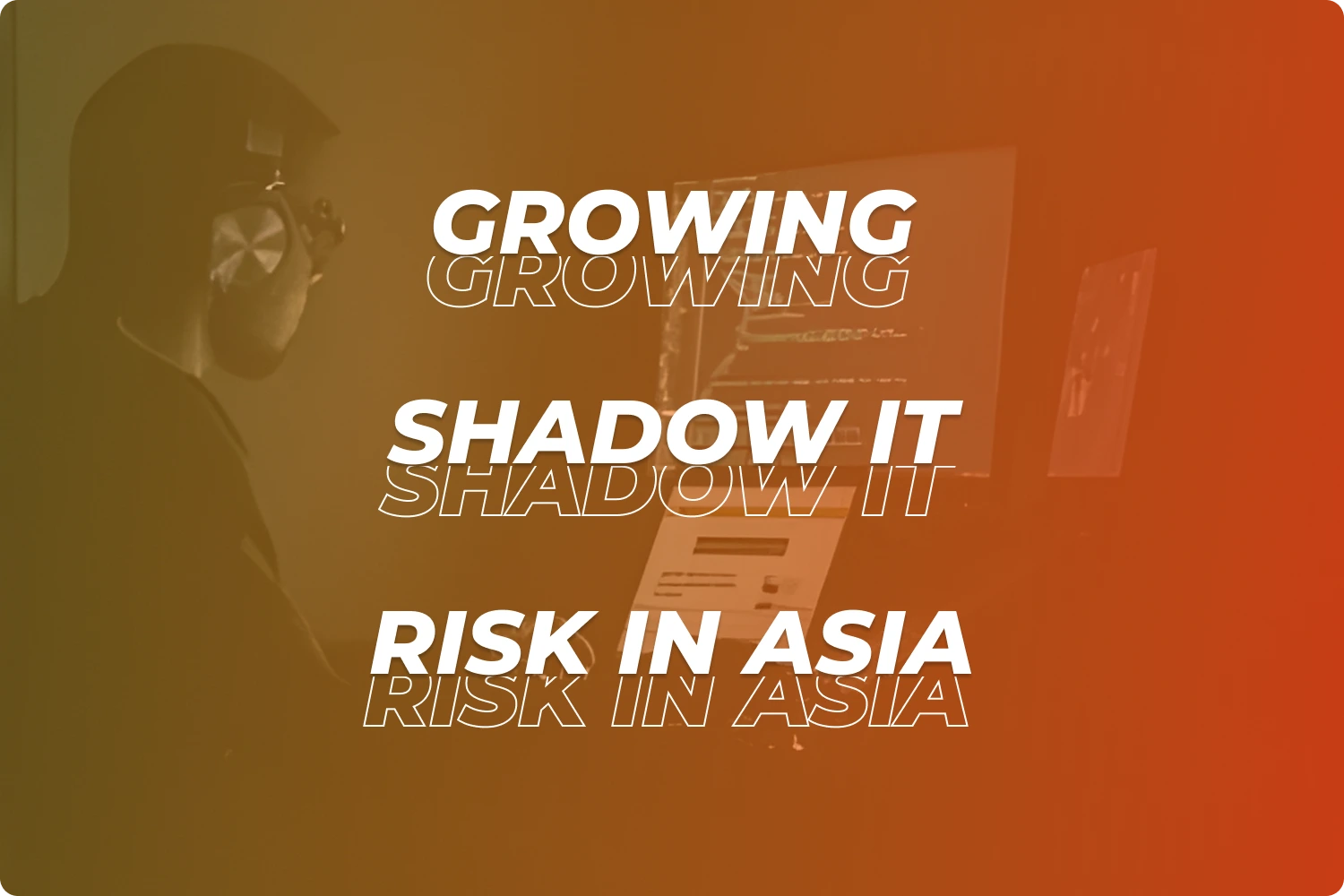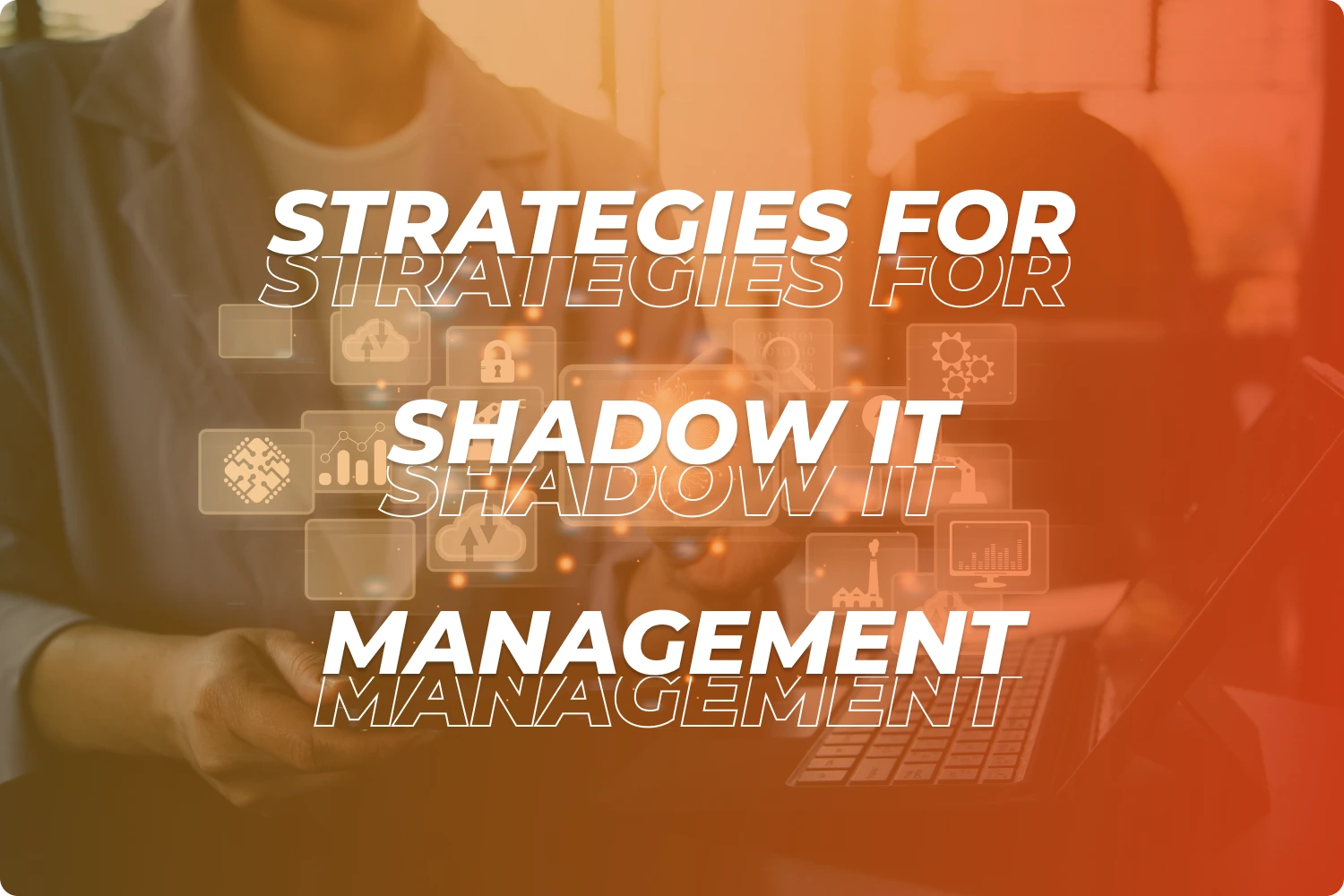Note: All scenarios described in this article are hypothetical composites drawn from general Asia-Pacific industry trends and publicly available information, not specific client experiences or case studies.
Shadow IT in Asian enterprises keeps popping up more and more often these days. If you're working in a leadership or IT role, chances are you've run into this headache: software, apps, or cloud services teams start using without getting a thumbs up from IT or management.
Maybe the finance department puts ChatGPT to work for quick reporting, or marketing tries a new AI image tool before checking it out for compliance risks. With tools like ChatGPT, Claude, and Copilot spreading fast, Asian enterprises face not only compliance risks but also hidden financial costs as shadow IT expands unchecked.
Organizations across Asia-Pacific need to get a grip on shadow IT before it creates bigger problems.

Why Shadow IT Management in Asia-Pacific Is Urgent Now
Shadow IT goes way beyond old-school Excel macros or someone plugging in a personal USB drive. These days, it covers everything from unsanctioned SaaS subscriptions to local filesharing apps and even full-blown AI platforms like Gemini or Claude.
The new twist in Asia is the AI boom. Generative AI is supposed to give a boost to productivity, but it also lets employees skip over tech approval processes more easily than ever.
Asian enterprises are feeling the heat thanks to tighter data privacy regulations. Singapore's PDPA, Hong Kong's PDPO, and MAS guidelines on tech risk are just the start. The rules don't always match across markets, which makes even simple IT decisions a whole lot more complicated.
Still, teams are eager to cook up something new and grab new tools fast, especially in go-getter economies like Singapore and Hong Kong.
At FunctionEight, we see clients across Singapore and Hong Kong grappling with these challenges as AI adoption accelerates. If you're leading IT for a growing company in Asia, unauthorized tech brings big risks to compliance, security, and your brand reputation.
Understanding Shadow IT in the Modern Asian Enterprise
Shadow IT means any hardware, software, cloud service, or AI app employees use without signoff or oversight from IT or security teams. It's the stuff sneaking into day-to-day workflow: sometimes helpful but often carrying hidden risks.
In Asia, shadow IT has grown fast. It used to be about rogue USB drives, Wi-Fi hotspots, or someone building an Access database to solve a quick problem.
These days, you're more likely to see:
- Employees spinning up WeChat workgroups for business projects (even if company policy says no)
- Teams moving files with local sharing apps or overseas cloud storage
- Departments putting AI copilots or ChatGPT to work to automate emails or crunch report data
- Managers downloading unauthorized project management tools if the company system is sluggish
The line between personal and work tech is blurrier than ever. For Asian organizations, multinational operations and hybrid work set-ups make this even wilder.
Common Shadow IT Examples in Asia
WeChat and WhatsApp as workarounds: Convenient, but risky for data leaks and violations.
Unapproved cloud storage: Google Drive, Dropbox, or local options for sharing sensitive files.
Generative AI: ChatGPT, Gemini, Copilot for customer mail, HR documents, and coding, often unchecked.
"Try-before-you-buy" SaaS tools: Employees testing new apps without a security review.
Even small teams jump on these tools to drive results, not realizing how much risk they're stacking up.
Why Shadow IT Is a Growing Risk in Asia
The mix of patchwork regulations, cross-border businesses, and lightning-fast tech adoption puts Asian organizations in a tough spot. Even harmless-looking apps can cause trouble if they leak customer data, break data laws, or open a door to malware.
Navigating Asia-Pacific Regulatory Pressures
The regulatory landscape in Asia isn't uniform. Each market has its own rules, timelines, and enforcement patterns. FunctionEight's regional IT governance work often highlights how businesses struggle with these overlapping requirements.
Singapore: MAS has strict standards for tech risk, especially in finance and insurance. An audit can go sideways if they find unofficial cloud use. PDPA enforcement has ramped up significantly, with substantial fines for data breaches.
Hong Kong: PDPO demands organizations know exactly where personal data is held. Shadow IT makes this a puzzle.
Thailand: The PDPA needs transparency and strong data handling, even for cloud and SaaS tools. Penalties can reach up to 5 million baht or a percentage of annual revenue.
Japan: The Act on the Protection of Personal Information (APPI) has specific requirements around cross-border data transfers. If your Tokyo office is using unapproved cloud tools that store data in US data centers, you could be violating APPI transfer rules.
India: The Digital Personal Data Protection Act (DPDP) introduces strict consent requirements and data processing obligations. Any shadow IT processing Indian citizen data needs to comply with consent mechanisms and data localization considerations. Organizations face penalties up to ₹250 crore for serious violations.
Malaysia: The Personal Data Protection Act requires organizations to register as data users and maintain comprehensive records of processing activities. Shadow IT undermines your ability to maintain accurate records.
Vietnam: Cybersecurity law and data protection regulations include server localization requirements for certain data types. Shadow IT using offshore cloud services could violate these localization rules without IT teams even knowing.
If IT teams can't see what's in use, they can't keep up with compliance duties across these varied regulatory environments.
Pro Tip: Create a compliance matrix that maps your operations against the data protection requirements in each market. This helps you quickly assess whether any discovered shadow IT tool creates regulatory exposure.
Security and Business Risks
Loose apps can leak confidential or financial data through weak permissions.
Malware or phishing threats can sneak in through unsanctioned downloads or AI tools tying into open APIs.
Audit failures and fines are real risks, especially for regional operators.
Your brand can take a hit if customers find out information got exposed by rogue tech.
Sometimes companies get a quick productivity lift from shadow IT, then spend months fixing the mess. That's the productivity paradox: saving time at first, paying the price later.
The Hidden Financial Costs of Shadow IT
Beyond security and compliance risks, shadow IT creates a financial drain that most organizations don't fully measure. Industry research suggests that shadow IT can represent 30 to 40% of total technology spending in some organizations.
Why It Matters to CFOs
Finance teams often struggle to understand the true cost of IT because shadow IT sits outside normal procurement channels. Budget forecasts become unreliable. Technology ROI calculations miss entire categories of spending.
The financial impact goes beyond just wasted subscription fees. It affects strategic planning, vendor negotiations, and overall operational efficiency.
Duplicate Software Spending and License Waste
When departments operate independently and sign up for their own tools, organizations end up paying for the same functionality multiple times.
Common duplications include:
- Multiple project management platforms across different teams
- Duplicate video conferencing or collaboration tool subscriptions
- Overlapping cloud storage from various providers
- Redundant AI tool subscriptions when a single enterprise license could serve everyone
Untracked Subscription Creep
Shadow IT subscriptions often start as free trials that automatically convert to paid plans. These charges hit corporate credit cards, get buried in expense reports, and renew automatically year after year.
Without centralized tracking, finance teams can't accurately forecast IT costs. Budget planning becomes unreliable. Unused subscriptions continue billing indefinitely.
Integration and Productivity Costs
When every team uses different unauthorized tools, you lose the benefits of integrated systems.
The knock-on effects include:
- Data gets trapped in silos across multiple platforms
- Teams waste time manually moving information between systems
- Reporting becomes fragmented and incomplete
- Automation opportunities disappear
Pro Tip: Conduct a financial audit of shadow IT alongside your security assessment. Calculate what you're actually spending on unauthorized tools versus what a properly managed solution would cost.
How to Discover Shadow IT in Your Organization
You can't fix what you can't see. Many organizations assume they have full visibility into their technology landscape, then discover significant blind spots during a proper assessment.
FunctionEight frequently runs discovery assessments that uncover dozens of unapproved tools in use, even when management believes everything is under control.
Warning Signs You Might Have Shadow IT
- Staff using unfamiliar apps or mobile tools on company equipment
- Teams chatting about new software nobody in IT has heard of
- Support tickets about problems with tools IT doesn't cover
- Strange network traffic to unapproved platforms
- Expense reports showing recurring charges for unknown SaaS tools
If this sounds familiar, it's time to dig in.
Discovery Methods
Network monitoring and traffic analysis: Firewalls or monitoring tools can show what outbound connections are being made.
Modern security appliances can identify cloud service traffic patterns and flag connections to unapproved SaaS platforms. Look for regular connections to file sharing sites, collaboration platforms, or AI services that aren't on your approved list.
Employee surveys and interviews: Sometimes you just need to ask employees what apps or tools they're using for their workflows.
Frame it positively: "We want to understand your needs" rather than "confess what you're doing wrong." You'll often get honest answers that reveal shadow IT you'd never discover through technical means alone.
Cloud Access Security Brokers (CASB): If you're up for it, these solutions monitor cloud activity across your business, shining a light on risky or unsanctioned activity.
CASBs can identify which cloud services are being accessed, how much data is being transferred, and assess the risk level of each service.
Endpoint detection tools: Software inventory scans on employee devices reveal what's actually installed and running.
This catches desktop software, browser extensions, and mobile apps that network monitoring might miss. Regular inventory scans help track changes over time.
API and integration audits: Check what third-party apps have been granted access to your core systems like Office 365, Google Workspace, or Salesforce.
Each connected app represents a potential security risk. Look for OAuth connections employees have authorized, API integrations set up without IT approval, and abandoned connections that are still active.
Financial audits: Review corporate credit card statements and expense reports for SaaS subscription charges.
This often reveals shadow IT that leaves no other footprint. Look for recurring monthly charges to software companies, especially those starting small from free trials converting to paid plans.
Common Discovery Patterns by Department
Finance: Junior employees using ChatGPT or Copilot to write investor emails or automate report crunching, copying in sensitive data.
HR: CVs being handled through LinkedIn messages or stored on a personal Google Drive.
Sales: Contracts sent through basic file sharing apps just for the speed and convenience.
Operations: Teams using unauthorized GPS tracking apps or logistics tools that store real-time location data without security reviews.
Once you spot these patterns, you can start to measure your exposure honestly.
Sizing Up the Risks and Impact
Not all shadow IT is a huge problem. Ranking each tool by the harm it could cause and how it matches your business goals and compliance needs makes sense.
Risk Categorization
Low Risk: Productivity tools that don't touch company data (like timers).
Medium Risk: Apps storing work docs or moderate data (used just for internal business).
High Risk: Anything involving customer, money, or regulatory data, especially AI, outside sharing, or tools with fuzzy data residency.
Sizing Up Data Sensitivity and Compliance Problems
Does the data fall under PDPA, PDPO, MAS, APPI, DPDP, or similar rules?
Are folks using personal accounts that make tracking leaks harder?
Is company data crossing borders (like from Singapore to the US)?
Checking unauthorized tech against the rulebook helps map out urgent fixes first.
The Impact: Security, Reputation, and Money
Could problems open you up to data breaches or ransomware?
Risking audit failures or fines is a real downside.
Could your business hit a standstill if the rogue app stopped working?
Many Asian enterprises face situations where staff stash confidential customer info in free cloud drives, triggering regulatory scrutiny. It often takes months to investigate and retrain everyone to solve the issue.
Strategies to Manage and Control Shadow IT
Dealing with shadow IT means balancing two things: sparking new ideas and keeping things in check.
1. Governance Policies
Write out clear, workable policies explaining the tech that's ok and what's not. Avoid black-and-white bans, those always backfire.
Good governance means giving practical rules people can follow.
2. Employee Education
Most employees just want things done faster, not to cause trouble. Regular training about risks and what tools are greenlit goes a long way.
Make local data laws (PDPA, PDPO, APPI, DPDP) easy to get, not complicated legalese.
3. Approved Alternatives
Offer a simple, pre-approved path. If everyone wants ChatGPT, consider rolling out an enterprise AI platform that's monitored and safe.
If file sharing is a hassle, make a secure tool that's easy to pick up.
4. Technical Enforcement
Firewalls can stop known risky services cold.
Zero trust setups mean access is tight, only when needed.
Use access controls to lock down sensitive data movements.
Tech controls need frequent checkups since shadow IT tools pop up fast.
Finding the Right Balance
No one wants a fear-driven culture. Make room for pilot projects, test, and clear new tools quickly, so people aren't tempted to just go around the rules.
AI Tools in Asia: The New Frontier of Shadow IT
AI is changing everything. With ChatGPT, Claude, Copilot, and Gemini available to anyone who signs up, teams are experimenting way before anyone checks for compliance.
FunctionEight helps clients pilot enterprise AI safely by building policies and technical safeguards that balance innovation with data protection.
Understanding Different AI Platforms
Each major AI platform has different characteristics:
ChatGPT (OpenAI): Widely accessible with free tier and paid subscriptions. Can be accessed via web browser, making it hard to block completely. Enterprise version offers better data controls. Risk: Free version may use input data for model training.
Claude (Anthropic): Known for longer context windows and nuanced responses. Often used for analyzing documents and complex reasoning tasks. Risk: Free tier may not have strong data protections.
Microsoft Copilot: Integrated into Microsoft 365 suite. Enterprise versions have strong compliance features. Risk: If enabled without proper governance, can expose sensitive documents.
Google Gemini: Integrated with Google Workspace. Enterprise version offers data residency options. Risk: Personal Google accounts may store and train on business data.
The key difference between personal and enterprise AI: data handling. Personal AI accounts typically don't offer guarantees about where data is stored or whether it's used for training.
Top AI Use Cases in Asia
- Drafting and summarizing emails
- Whipping up first drafts or translations of company documents
- Pulling together dashboards or reports for managers
Risks Unique to AI and Shadow IT
Staff might paste sensitive docs, HR files, or customer data into outside AI chats without realizing that could be stored or accessed later.
Some AI tools keep user data for "machine learning," which can be a huge problem for PDPA, PDPO, APPI, and DPDP rules.
Cross-border data flow is everywhere, with Asian data often heading overseas.
Best Practices for Safe AI Use
Give people solid, private AI options with strict privacy and tight data control.
Create test sandboxes where staff can try AI with fake data before rolling it out for real work.
Teach everyone why dropping sensitive info into public AI tools can cause problems.
Make sure data is tagged so only safe stuff can go into AI apps.
Stay in the loop with local compliance pros as rules keep changing.
Strong policies and regular updates are a must as Asian data laws shift fast.
Setting Up a Solid IT Governance Model
To move from always playing defense to running a tight ship, focus on these must-haves:
Build Trust Over Fear
If IT acts as a helper, not just the rule police, people are more likely to ask before bringing in new tools or admit when they've gone off-script.
Team Up with Other Departments
IT isn't an island. Compliance, HR, and department heads have to carry some weight.
Sharing info early means risk is spotted fast, before HR uploads payroll to some dodgy HR tech app.
Managed IT Services and Ongoing Monitoring
Many fast-growing companies in Singapore, Hong Kong, and beyond work with managed IT services providers to help with security, policies, and shadow IT monitoring.
These professionals often have the tools and regional know-how to help organizations stay steady even as regulations change.
Hypothetical Regional Scenarios
The following scenarios illustrate common shadow IT patterns observed across Asia-Pacific markets. They are composite examples based on regional trends, not specific organizational experiences.
Scenario 1: Thai Healthcare Provider with Messaging Apps
A common scenario in the region involves healthcare networks where clinical staff use LINE and WhatsApp to coordinate patient care and share lab results. Patient health information gets transmitted without proper security or audit trails.
A typical resolution involves implementing a secure messaging platform designed for healthcare and running intensive training on privacy requirements.
Scenario 2: Logistics Firm with Unauthorized GPS Tools
Many regional logistics providers discover drivers using personal GPS apps and unauthorized route optimization tools. Real-time location data for valuable shipments flows through insecure consumer apps.
Industry best practice involves investing in an enterprise fleet management system with proper security controls and driver-friendly mobile interfaces.
Scenario 3: Regional Bank with AI Copilots
A pattern emerging across Southeast Asian financial institutions involves relationship managers using personal ChatGPT accounts to analyze financial statements and draft client communications. Customer financial data gets uploaded to consumer AI platforms.
Recommended approaches include implementing controlled AI pilots using enterprise platforms with banking-grade security and creating clear policies defining acceptable AI use.
Scenario 4: Hong Kong Financial Firm with Rogue AI Usage
Financial companies in Hong Kong sometimes face situations where analysts use ChatGPT for research writeups that include sensitive ratings and deal info. IT audits reveal the problem, prompting action.
Best practice solutions involve identifying departments using AI, establishing clear policies, and training staff on acceptable practices, and transitioning critical projects to encrypted, enterprise AI platforms.
Scenario 5: Singapore SME and Personal Cloud Storage
A typical challenge for Singapore retail SMEs involves salespeople storing contracts and receipts in free cloud drives with customer details, potentially breaking PDPA rules.
Recommended remediation includes moving company documents to approved, in-house storage platforms, educating teams about security risks of free apps, and implementing automated tools to flag unapproved uploads.
Takeaways from Regional Trends
Even well-run organizations can miss shadow IT, vigilance is essential.
Proactive tracking and honest communication typically work better than threats and punishments.
Managed IT partners with local know-how can help navigate both technical and cultural challenges.
Frequently Asked Questions
What counts as Shadow IT?
Shadow IT is any tool (hardware, software, app, or cloud) that employees use for work without official approval. It could be chatbots, file storage, messaging apps, or anything in between.
Is Shadow IT always bad?
Not by default. Sometimes these tools help teams work smarter. The big problem is not knowing what's being used or how business data is handled. Good policies find the balance between freedom and control.
How can AI tools like ChatGPT be used safely at work?
Strong policies, vetted platforms, and ongoing education can enable safer AI use. Enterprise AI solutions and sandboxes can help manage risk while allowing teams to experiment.
How quickly can Shadow IT be found out?
With appropriate monitoring tools (firewalls, CASB, and regular audits), shadow IT can be identified within days or weeks. However, complete discovery often takes several months.
Do SMEs face the same risks as the big guys?
Yes. In fact, smaller businesses sometimes face greater challenges because they have fewer resources dedicated to oversight. Regulations like PDPA and MAS apply regardless of company size.
Ready to Take Control of Shadow IT?
Feeling like you're always trying to catch up as new tools keep sneaking in? You're not alone. Protecting your business, customers, and reputation starts with identifying, assessing, and managing shadow IT, then implementing solutions that match your size, risk level, and culture.
FunctionEight provides IT governance, security, and managed services across Singapore, Hong Kong, and Asia-Pacific. If you're looking for support with shadow IT discovery, AI governance, or regulatory compliance across PDPA, PDPO, APPI, and DPDP, we can help assess your situation and develop appropriate strategies.
Contact us for a consultation to discuss your organization's specific needs and how we can support your IT governance objectives. Together, we'll keep your tech secure and your business growing.









